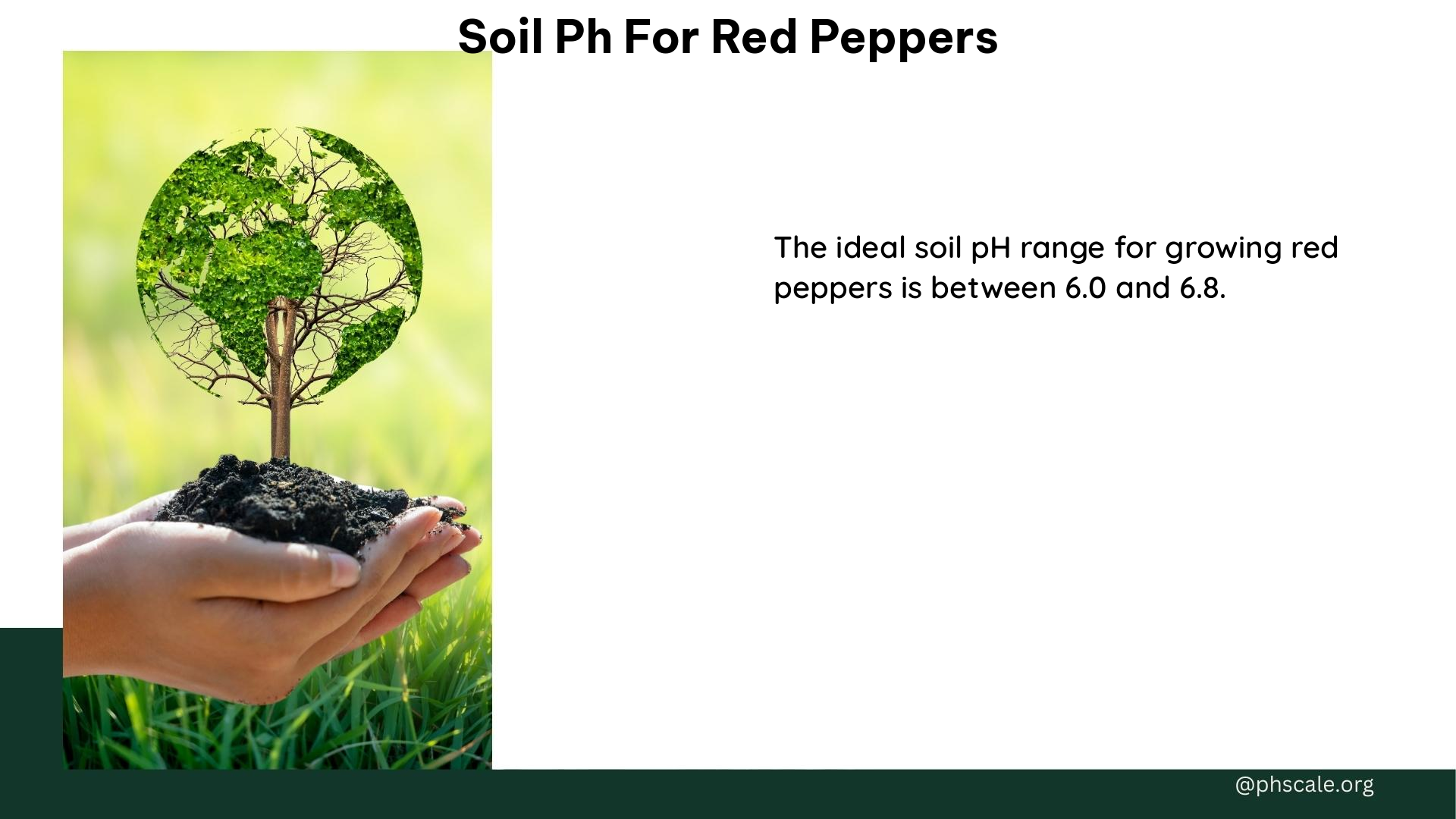The ideal soil pH range for growing red peppers is between 6.0 and 6.8, which is slightly acidic. This pH range allows the pepper plant to efficiently absorb essential nutrients like phosphorus and magnesium, leading to the development of healthy, flavorful red peppers. In this comprehensive guide, we’ll explore the importance of soil pH, methods for testing and adjusting it, and specific considerations for cultivating thriving red pepper plants.
Understanding Soil pH for Red Peppers
Soil pH is a crucial factor in the growth and development of red peppers. The pH scale ranges from 0 to 14, with 7 being neutral. Anything below 7 is considered acidic, while values above 7 are alkaline or basic. Red peppers thrive in a slightly acidic soil environment, with the ideal pH range falling between 6.0 and 6.8.
Adjusting Soil pH for Red Peppers

If your soil’s pH is not within the optimal range for red peppers, there are several methods you can use to adjust it:
Acidifying the Soil
To lower the pH and make the soil more acidic, you can use the following amendments:
– Sulfur compounds (e.g., elemental sulfur, aluminum sulfate, ammonium sulfate, iron sulfate)
– Organic matter like peat moss, wood chips, and yard compost
Alkalizing the Soil
If the soil is too acidic, you can raise the pH by adding lime, which is a common alkaline amendment.
Testing Soil pH for Red Peppers
Accurately testing the soil pH is essential for ensuring optimal growing conditions for your red peppers. You can use a variety of methods, including:
– Soil test kits: These kits typically include pH test strips or other materials to assess the acidity or alkalinity of the soil.
– DIY methods: One simple DIY approach is to mix red cabbage juice with the soil and observe the color change, which can provide a rough estimate of the soil’s pH.
It’s recommended to take random soil samples from 6 inches below the surface and mix them together for an accurate reading.
Maintaining Ideal Soil pH for Red Peppers
Once you’ve determined the soil pH, you can take steps to maintain the optimal range of 6.0 to 6.8 for your red pepper plants:
Natural Methods
- Use vinegar to acidify the soil: Mix two cups of white vinegar with 20 liters of rainwater and apply it periodically.
- Incorporate organic matter: Adding peat moss, wood chips, and yard compost can help maintain a slightly acidic soil pH over time.
Monitoring and Adjustments
- Test the soil pH regularly, especially before planting and during the growing season.
- Make necessary adjustments using the acidifying or alkalizing amendments as needed to keep the pH within the ideal range.
Specific Considerations for Red Pepper Varieties
While the general pH range of 6.0 to 6.8 is suitable for most red pepper varieties, some cultivars may have slightly different preferences:
– Habaneros: Prefer a pH range of 5 to 6
– Bell peppers and jalapeños: Thrive between 6.0 and 6.8
It’s essential to research the specific pH requirements of the red pepper varieties you plan to grow to ensure optimal growth and yield.
Conclusion
Maintaining the ideal soil pH range of 6.0 to 6.8 is crucial for growing vibrant, flavorful red peppers. By understanding the importance of soil pH, testing and adjusting it as needed, and considering the specific requirements of different red pepper varieties, you can create the perfect growing environment for your plants. With the right soil pH management, you’ll be well on your way to harvesting a bountiful crop of delicious red peppers.
References:
- SummerWinds Nursery. (n.d.). How to Get Hotter Peppers Just by Adjusting Your Soil. Retrieved from https://www.summerwindsnursery.com/ca/inspire/blog/grow-hotter-peppers/
- Ohioline. (2017, September 8). Growing Peppers in the Home Garden. Retrieved from https://ohioline.osu.edu/factsheet/hyg-1618
- Tomatoville. (2013, March 1). Peppers. Acidifying the soil. Retrieved from http://www.tomatoville.com/showthread.php?t=26818
- PepperScale. (2023, March 10). What Is The Best Soil pH For Peppers? Retrieved from https://pepperscale.com/soil-ph-for-peppers/
- Reddit. (2023, January 29). Soil PH : r/HotPeppers. Retrieved from https://www.reddit.com/r/HotPeppers/comments/10o0nwt/soil_ph/.
